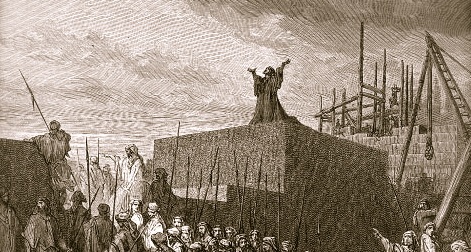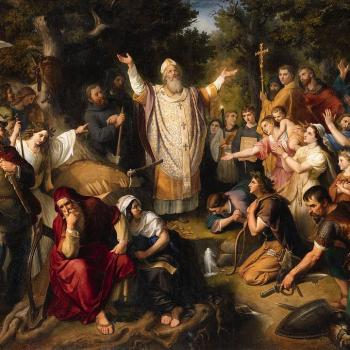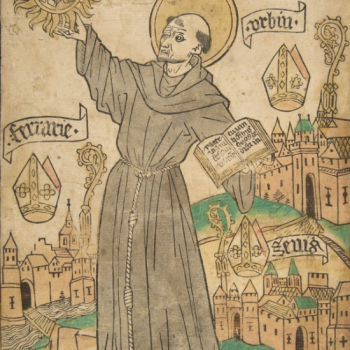A great deal of the Hebrew Bible consists of Jewish reflections on a period of time where many of the citizens of Judah were deported by the Nebuchadnezzar II, king of the Neo-Babylonian Empire. Nebuchadnezzar had attacked Jerusalem, put it under siege, and destroyed it. Not only did he burn the city, he also destroyed the Temple, which was the center of worship for the people of Judah.
The destruction of Jerusalem and the deportation of the people from the land led to an existential crisis of sorts for many of the followers of YHWH. The faith had been understood by many as centering on two central promises of God:
- The land on which they lived was an inheritance given by God, and therefore no other people had a right to it. The land connected them with their original patriarch, a man named Abraham, who God had chosen to be the father of God’s chosen people. The land connected them with their heritage as a part of the twelve tribes who had originally come into the land and fought to have their “rightful” place in the midst of it.
- The Temple was THE place where god had promises to put his name, and from where the system of covenant could be understood and carried out. The temple was a connection to Moses, through whom God had led His people out of slavery and Egypt and given them the law. It also connected them with the dynasty of a great king named David. David had been the first one to move the center of worship to Jerusalem and his son and successor, Solomon, was credited with the building of the Temple itself.
The Exile shook the foundations of Jewish faith to the core.
What was someone supposed to hold onto if the most tangible symbols of God’s promise and faithfulness were now Gone?
The faith of the people of Judah became redefined in their tragedy by necessity. It was in this crisis that most scholars believe that the JEWISH faith was born.
Restoration in Judah’s history meant far more then a renewal of things that had come before. What had come before had not led them to a good and upright place. There needed to be something more.
Many people look to the “restoration” phase in Israel’s history as what happened when they were allowed to reenter the land, rebuild the walls of the city and worship again in the Temple.
I would like to contend that Restoration began when all of these things were taken away from them.
Although restoration can mean something is returned to it’s original state, in the case of Judah it makes a lot more sense to think about their restoration as a process of renovation.
As the people of Judah began to reflect on their faith in a new land and in a new context, they were able to see the world with new eyes. Here are a few examples of how the Exile seemed to operate as a way to begin renovations in the people of Judah.
- Although they still affirmed that God was at work in a special way through them, they also began to see that other peoples and faiths might have a richness they could learn from.They allowed the beliefs of others to challenge their theological assumptions and began to engage with the sacred tradition that they had with new eyes and an openness to see if God might be doing something bigger then they had ever imagined before. One example of this is the belief in resurrection. Although it was not a seriously discussed issue before the exile, as the Jews came into contact with the Zoroastrian faith they were forced to ask questions about it, and many Jews began to see a thread in their own tradition that pointed to the possibility of a new life for the dead in the future. We can also see similar influences helping the Jewish people to begin to think about angels more deeply and developed a deeper theology about how evil is a work in the world.
- Before the Exile, life with God was centered in a system of rituals. The community viewed the Temple as the primary place to look to in order to see God moving in the world. After the exile prophets began to talk about God as a presence that could be at work anywhere. As a result the community began to gather in synagogues. These places of meeting made it possible for the chosen community of God, Israel, to gather in worship anywhere in the world. The Jewish faith emerged as a faith that could exist anywhere. Unlike the other 11 tribes that were dispersed around the world never to be heard of again, Judah was able to maintain their identity.
The questions I now have to ask myself is, how much am I willing to let go of strict ideas of where God is moving? If God wanted to show my community of faith new places He was at work, and new means by which God was building His kingdom, would my community have ears open enough to hear it?
I hope so.













